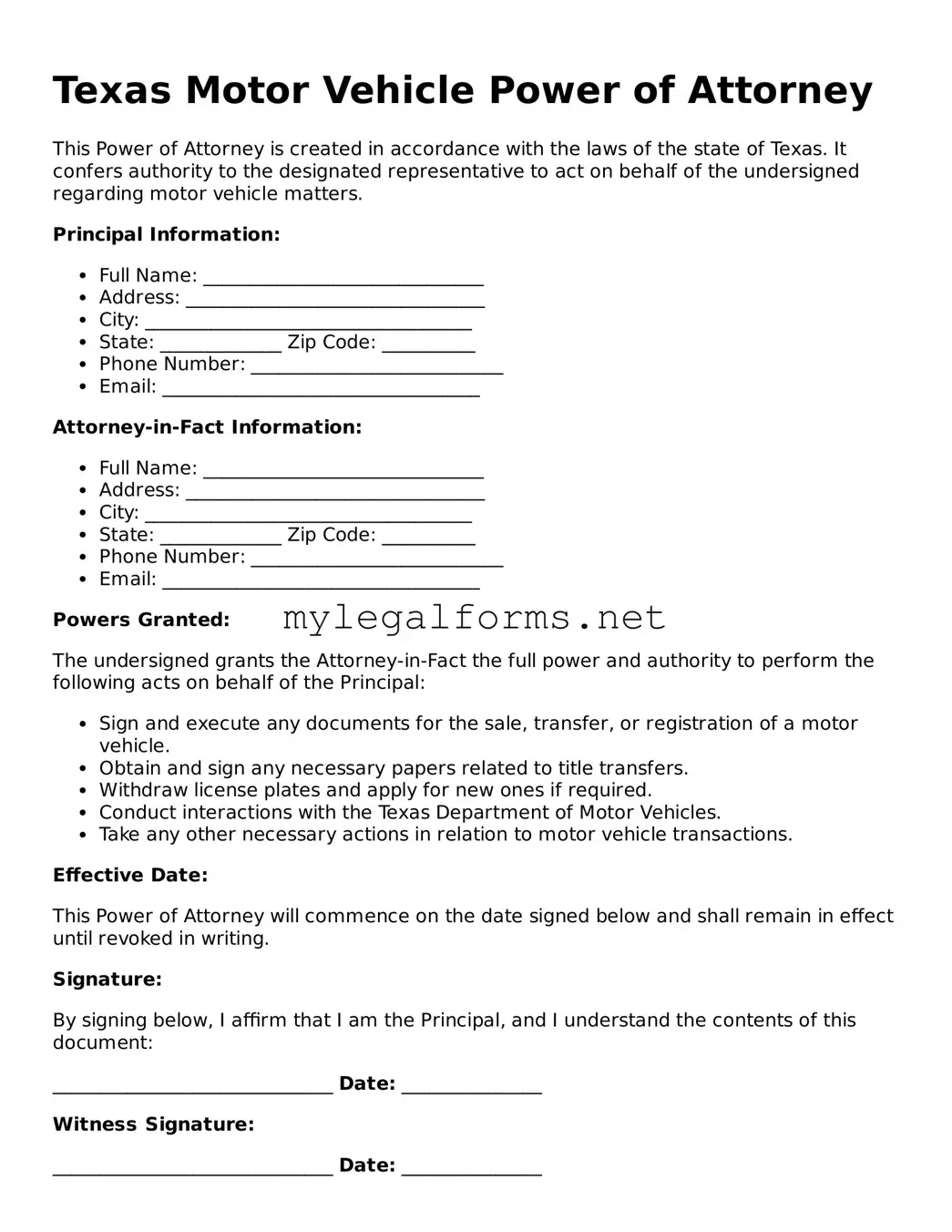Texas Motor Vehicle Power of Attorney
This Power of Attorney is created in accordance with the laws of the state of Texas. It confers authority to the designated representative to act on behalf of the undersigned regarding motor vehicle matters.
Principal Information:
- Full Name: ______________________________
- Address: ________________________________
- City: ___________________________________
- State: _____________ Zip Code: __________
- Phone Number: ___________________________
- Email: __________________________________
Attorney-in-Fact Information:
- Full Name: ______________________________
- Address: ________________________________
- City: ___________________________________
- State: _____________ Zip Code: __________
- Phone Number: ___________________________
- Email: __________________________________
Powers Granted:
The undersigned grants the Attorney-in-Fact the full power and authority to perform the following acts on behalf of the Principal:
- Sign and execute any documents for the sale, transfer, or registration of a motor vehicle.
- Obtain and sign any necessary papers related to title transfers.
- Withdraw license plates and apply for new ones if required.
- Conduct interactions with the Texas Department of Motor Vehicles.
- Take any other necessary actions in relation to motor vehicle transactions.
Effective Date:
This Power of Attorney will commence on the date signed below and shall remain in effect until revoked in writing.
Signature:
By signing below, I affirm that I am the Principal, and I understand the contents of this document:
______________________________ Date: _______________
Witness Signature:
______________________________ Date: _______________
Notary Public:
State of Texas, County of ______________________
Subscribed and sworn before me on this _____ day of ____________, 20___.
______________________________ Notary Public Signature:
My Commission Expires: ________________
